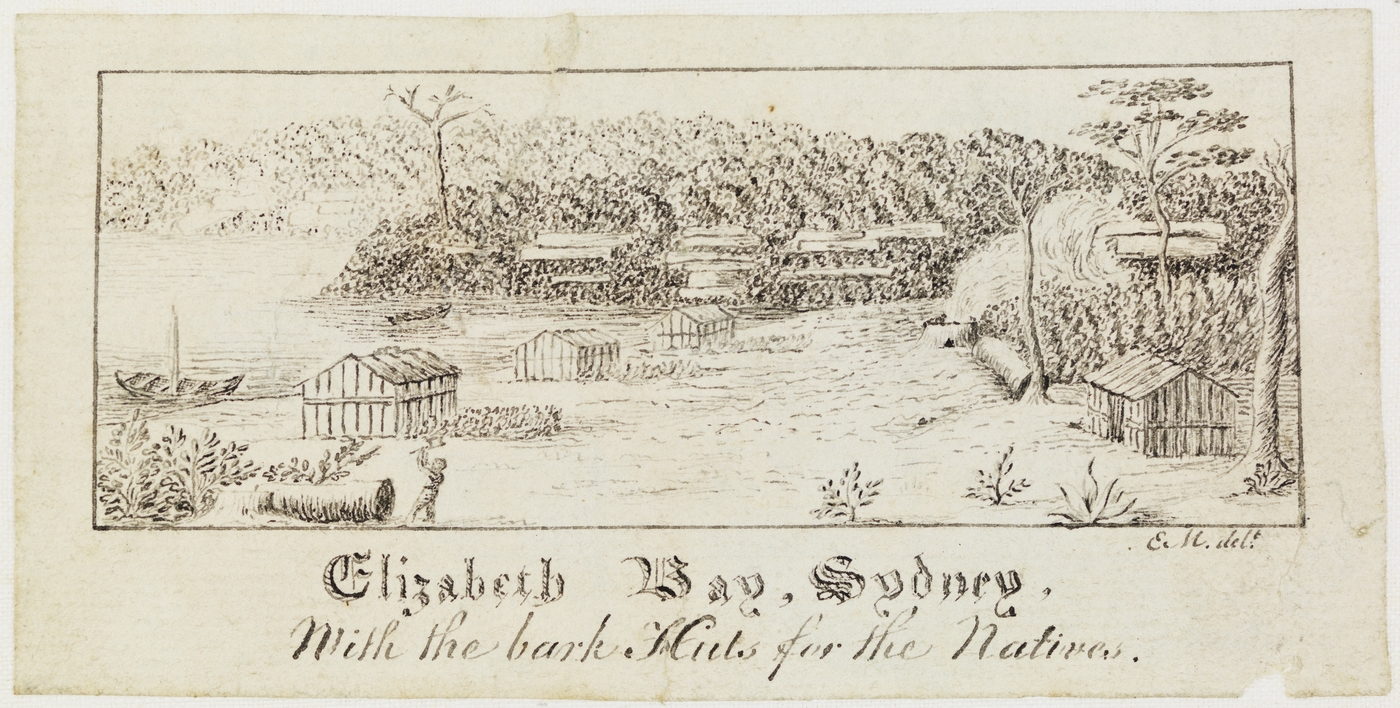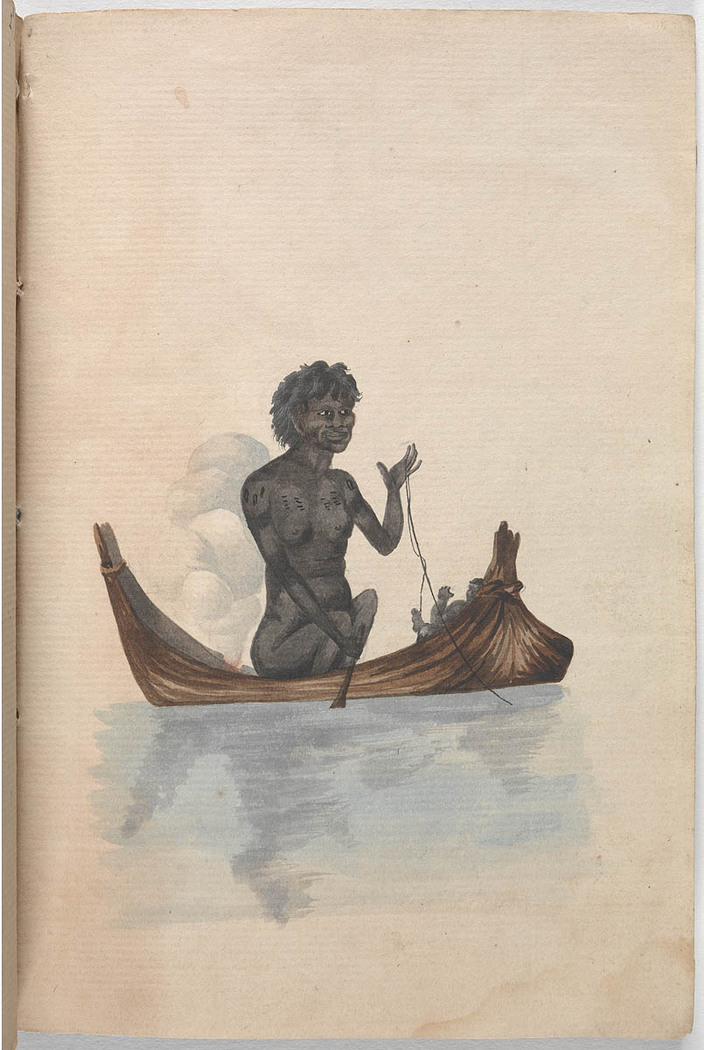Lewin’s painting celebrates the abundance and variety of fish that could be gleaned from Sydney Harbour. With its breathtaking views of Sydney Harbour, you can only imagine that the Macleays would have the freshest of fish on their table at Elizabeth Bay House.
Fashion over flavour
Yet Louisa Anne Meredith, visiting from England in the late 1830s suggests otherwise:
There are some excellent fish to be procured here, but I know them only by the common Colonial names, which are frequently misnomers. The snapper, or schnapper, is the largest with which I am acquainted, and is very nice, though not esteemed a proper dish for a dinner-party – why, I am at a loss to guess; but I never saw any native fish at a Sydney dinner-table – the preserved or cured cod or salmon from England being served instead, at a considerable expense, and, to my taste, it is not comparable with the cheap fresh fish, but being expensive, it has become “fashionable”, and that circumstance reconciles all things.
19th century cookbooks abound with fish recipes – remembering especially that in many households Fridays were fish-days. Fish was baked, or served au gratin – with butter, herbs & breadcrumbs; boiled, served with a sauce (caper sauce, wine sauce); crumbed and shallow fried; scalloped – served in shells on a bed of rice; collared – especially larger fish or eel; put into pies – topped with puff pastry or mashed potatoes; curried – lobsters and oysters were popular for curries; potted – anchovies, prawns, lobster pounded with fresh butter and spread onto toast at breakfast; and of course, soups, like the seaman’s chowder.
Chow down on chowder
Sydney’s Chowder Bay earned its name from exactly this – originally a whaling base for south-seas fishermen, who were renowned for living on fish soups and stews made from whatever they could catch (see recipe below). When lemons weren’t available (yes, once upon a time they were only available in season) fish would be seasoned with a splash of vinegar – often infused with chilli for an extra flavour hit. Split a whole chilli lengthways and drop into a small bottle of white vinegar and allow it to infuse; it will be ready to use in a week.

Elizabeth Bay, Sydney, with the bark Huts for the Natives, from Views of Sydney and surrounding district, Edward Mason, c 1821-1823. Mitchell Library, State Library of NSW: PXC 459
Prior to the Macleay’s arrival in Sydney, Elizabeth Bay had been a fishing ‘village’ of sorts. Governor Lachlan Macquarie had set aside the area for Aboriginal people’s use in 1815; an expanse of land on the northern side of the harbour was also designated for Aboriginal people to ‘farm’. Huts were built along the shoreline at Elizabeth Bay where some of Sydney’s most expensive houses now stand, with the assumption that Aboriginal people would ‘settle’ in the English sense, now that the freedoms they once enjoyed were compromised or in some cases, prohibited by European occupation. While such a plan seems to show a lack of understanding and respect for the traditional Aboriginal way of life, it does show that Macquarie was encouraging Aboriginal people to be part of the newly created settler society and its economy. With the change in governorship in 1821, however, the land was resumed for crown use by Sir Thomas Brisbane, and subsequently given to the colonial secretary Alexander Macleay by Governor Darling in 1825.

Aboriginal woman in a canoe fishing with a line, artist unknown, c1809. Mitchell Library, State Library of NSW: PXB 513
Simple seafood chowder
Ingredients
- 2 tablespoons butter
- 1 Small onion, finely chopped
- 2 celery sticks (inner white ones if possible), finely chopped
- 1 Small fennel bulb, finely chopped
- 250ml (1 cup) white wine
- zest and juice of 1 lemon
- 1 large potato, peeled and diced
- 500ml (2 cups) fish or chicken stock
- 800g fish and seafood (or fresh marinara mix), bones and skin removed
- pinch cayenne pepper (optional)
- 250ml (1 cup) pouring cream
- chopped parsley, to garnish
- crusty bread rolls and lemon wedges, to serve
Note
Seafood chowders have been seamen's staples for centuries, usually made from the trimmings of a commercial catch or whatever was caught in the net. You can use any varieties of fish and seafood you please.
Serves 4, or 6–8 as an entree
Directions
| Melt the butter in a large saucepan over low heat. Add the onion, celery and fennel, and cook for about 5 minutes or until the onion becomes translucent. Add the white wine and 250 ml (1 cup) of water and simmer for about 30 minutes or until the liquid has reduced by half. Add the lemon zest, potato and stock, and simmer gently for 30 minutes or until the vegetables are soft. | |
| Meanwhile, prepare the fish and seafood. Cut the fish into 1-cm chunks (or to your liking). Peel and devein prawns, and halve them if very large. Cut squid into 2-cm lengths. Scrub pipis, clams or mussels (molluscs) and remove their beards. You can also remove their shells if preferred. Throw away any broken molluscs or open ones that do not close when tapped. Once cooked, throw away any unopened molluscs. Strain the lemon juice and add to the soup along with the fish, seafood and cayenne pepper, if using. Simmer gently for about 5–8 minutes or until the fish and seafood are just cooked (the fish will start to lose its opalescence). Add the cream and heat through. Season to taste. | |
| Sprinkle the parsley over the soup. Serve with crusty rolls and lemon wedges. | |
A modern dilemma
Chemical testing in Sydney Harbour have meant restrictions on fishing in its waterways and river systems; commercial fishing was banned in 2006. Guidelines on consumption of harbour caught fish can be found at http://www.dpi.nsw.gov.au/fisheries/recreational/info/sydney-closure The Ocean Watch tide-to-table initiative is worth taking a look at to understand the wider effect on our impact on our fish supplies: http://www.oceanwatch.org.au/our-work/tide-to-table/

 Print recipe
Print recipe

